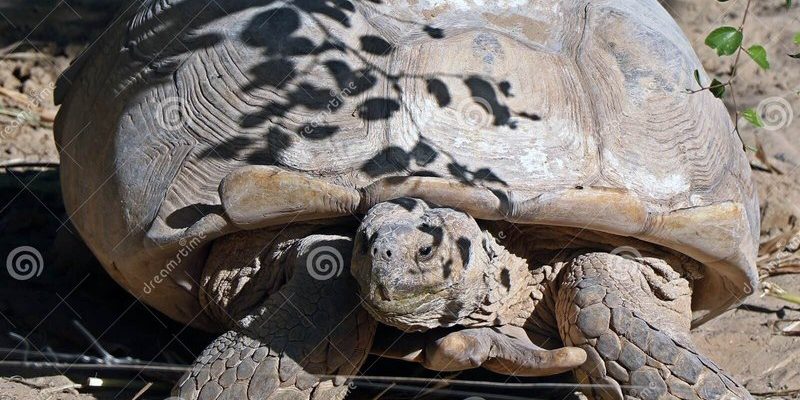![Comparing The Galã¡Pagos Tortoise Vs. [Similar Species]](https://gudri.com/wp-content/uploads/2025/06/Comparing_The_Gal__Pagos_Tortoise_Vs___Similar_Species__image_0.jpg)
Both tortoises are marvels of evolution, having adapted to their specific habitats over millions of years. The Galápagos tortoise, native to the famed Galápagos Islands, is often associated with Charles Darwin and his theory of evolution. On the other hand, the Aldabra tortoise hails from the remote Aldabra Atoll in the Indian Ocean, thriving in a different yet equally captivating environment. Let’s dive deeper into what sets these two titans apart.
Physical Features: Size and Shell Shape
When you first see a Galápagos tortoise, you might be struck by its massive size. These tortoises can weigh over 500 pounds and reach lengths of up to 4 feet. Their shells are dome-shaped, which helps them stand tall and access food high up on plants. This unique shape is especially useful on the islands where they primarily live, allowing them to thrive in diverse habitats.
Conversely, the Aldabra tortoise is also a heavyweight but has its own distinct look. They can weigh around 400 pounds and can grow to about 3 feet in length. Their shells are flatter and more elongated compared to their Galápagos cousins. This shape is perfect for helping them move across the flat terrain of the Aldabra Atoll, making it easier to graze on the low-growing vegetation available in their environment.
In short, while both tortoises are impressive in size, their shells vary significantly, reflecting the demands of their respective habitats.
Habitat and Range
The Galápagos tortoise thrives on the Galápagos Islands, a UNESCO World Heritage site. Each island boasts different climates and vegetation, shaping the tortoises’ diets and behaviors. For example, some islands are dry, while others are lush and green. This variance leads to different subspecies, each adapted to its unique island environment.
On the flip side, the Aldabra tortoise is found exclusively on Aldabra Atoll, part of the Seychelles. This atoll is remote and features a variety of habitats, from mangroves to dry grasslands. The Aldabra tortoise is well-suited to this environment, where it finds plenty of food and shelter. Their habitat is also teeming with other wildlife, making the ecosystem rich and vibrant.
Honestly, the differences in habitat not only affect where these tortoises live but also play a significant role in their diets, behavior, and conservation status.
Dietary Preferences: What Do They Eat?
You might be wondering what actually fuels these giants. The Galápagos tortoise primarily feeds on a diet of grass, leaves, and fruits. During the dry season, they can often be seen foraging for juicy cactus pads. Their strong jaws are perfect for munching through tough vegetation, allowing them to get the nutrition they need to thrive.
In contrast, the Aldabra tortoise has a slightly different menu. Their diet mostly consists of grasses, herbs, and leaves. They’re also known to munch on fruits from palm trees. The Aldabra tortoise plays an essential role in its ecosystem by helping to disperse seeds through its dung, promoting plant growth.
Both species are herbivores, but their food sources vary significantly due to their distinct habitats. They’ve adapted to eat what’s available, showcasing their incredible versatility.
Behavior and Social Structure
When it comes to behavior, the Galápagos tortoise is fairly solitary. They spend much of their time grazing or lounging in the sun. Though they don’t form strong social bonds, they can be seen interacting during the breeding season. Male tortoises may engage in vocalizations and even tussles to win the attention of females, showcasing their territorial instincts.
The Aldabra tortoise is similarly solitary but can sometimes be found in groups, especially when feeding. Their social interactions are a bit more pronounced, as they often communicate with one another through sounds and body language. This social flexibility helps them remain connected within their ecosystem, especially during mating seasons.
Here’s the thing: while both species may be solitary by nature, their behaviors illustrate how they’ve adapted to their environments. The Galápagos tortoise may be more independent, while the Aldabra tortoise showcases a little more social interaction.
Conservation Status: Challenges and Efforts
Both the Galápagos and Aldabra tortoises face significant threats, but their conservation statuses differ. The Galápagos tortoise is classified as endangered, primarily due to human impact, invasive species, and habitat loss. Conservation efforts are actively in place, including breeding programs and habitat restoration initiatives. Organizations and local governments are continuously working to protect this iconic species and its unique environment.
The Aldabra tortoise, on the other hand, is listed as vulnerable, mainly due to habitat destruction and climate change. However, it benefits from the relative isolation of Aldabra Atoll, which helps protect it from many human-related threats. Conservation programs also focus on monitoring their populations and ensuring their habitat remains intact.
Both species remind us of the delicate balance within ecosystems and the importance of ongoing conservation efforts to protect these incredible reptiles.
Final Thoughts: What Makes Them Unique?
In summary, the Galápagos tortoise and the Aldabra tortoise are not just remarkable because of their size; they represent the diverse adaptations of life on Earth. Each species has evolved unique characteristics that help it survive in its specific environment. From their physical features and habitats to their behaviors and conservation efforts, there’s so much to appreciate about these living symbols of resilience.
As our planet faces increasing environmental challenges, understanding and protecting species like the Galápagos and Aldabra tortoises is crucial. Connecting with these creatures fosters a sense of responsibility and care for our natural world. Let’s keep celebrating and safeguarding their legacy for generations to come!

